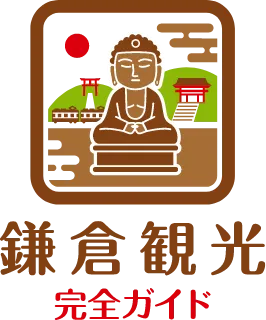Autumn Leaves of Myohon-ji Temple (妙本寺)
Discover the Autumn Leaves at Myohon-ji Temple (妙本寺)
Nestled in the quiet Hikigayatsu Valley, Myohon-ji Temple—the oldest Nichiren temple in Kamakura—offers one of the city’s most tranquil autumn scenes. Surrounded by a valley known as a yato, this historic temple is celebrated for its deep connection with nature throughout the seasons. In late autumn, crimson maples and golden ginkgo trees illuminate the temple grounds, with the brilliant red Niten-mon Gate and the grand Soshi-do Hall creating a striking contrast. Known as the “latest autumn leaves in Kamakura,” Myohon-ji reaches its peak from early to mid-December, when other sites have already faded.
Stepping into the temple grounds, visitors are enveloped in cool air and stillness. The vivid colors—red gates, golden ginkgo, and fiery maples—form a harmonious palette that feels timeless. Especially around the Niten-mon Gate, the scenery becomes a living canvas of color and light.
When Is the Best Time to Visit?
The best viewing period is from early to mid-December, depending on the year’s climate. As the last foliage of Kamakura to turn color, Myohon-ji offers a rare chance to experience the finale of autumn when most other temples have returned to quiet green.
The soft morning sunlight shining through the leaves creates a magical “backlit glow,” perfect for photography or quiet contemplation. In the afternoon, the gentle light wraps the temple in calm tones, offering another side of the valley’s beauty.
Photo Highlights and Must-See Spots
The red-painted Niten-mon Gate is the symbol of Myohon-ji’s autumn. Built in the mid-19th century, it stands surrounded by maples and ginkgo, creating a stunning contrast of red, gold, and green. Passing through the gate reveals the grand Soshi-do Hall, one of the largest wooden structures in Kamakura. Moss-covered stone steps and the deep greens of the valley enhance the temple’s peaceful beauty.
The bell tower area is another favorite photo spot. Here, the natural gradient of red, yellow, and green unfolds beautifully, especially in the gentle morning light. In front of the Soshi-do stands a giant ginkgo tree, designated as a Natural Monument by Kamakura City. Its golden leaves glow brilliantly in late autumn, marking the final flourish of the season.
Embrace the Quiet Morning at Myohon-ji
Hidden deep in the valley, Myohon-ji offers a rare silence that contrasts with Kamakura’s busier temples. In the early morning, birdsong echoes softly, and the sun’s first rays illuminate the leaves in a golden haze—a quiet moment of natural art.
For guests staying at Tosh’s Place (トシズプレイス), visiting before breakfast is ideal. The self-check-in style accommodation allows flexible mornings to enjoy the temple’s tranquility. In the late afternoon, when most visitors have left, you can once again savor the calm, watching the leaves glow softly under the fading light.
How to Get There from Tosh’s Place (トシズプレイス)
Myohon-ji Temple is conveniently located about a 10-minute walk from central Kamakura, making it perfect for morning or evening strolls during your stay. Admission is free, and the grounds are open throughout the day. The temple office (shamusho) offers goshuin and omamori from 9:00 a.m. to 4:00 p.m.
After viewing the autumn leaves, consider taking the Gionyama Hiking Trail behind the temple. The short climb rewards you with panoramic views of Kamakura’s mountains and sea—a refreshing way to end your temple visit and deepen your sense of the season.
Wrap-Up: Living the Kamakura Autumn at Your Own Pace
In late autumn, Myohon-ji Temple becomes a peaceful retreat where nature and history merge in perfect balance. As the valley fills with the last blaze of red and gold, visitors can feel Japan’s autumn at its quietest and most contemplative.
Staying at Tosh’s Place lets you experience this beauty up close—morning walks through glowing leaves, quiet evenings in the valley, and a sense of living, not just traveling, in Kamakura’s late-autumn light.
Toshi’s Evaluation (2025)
| Category | Score | Reason |
|---|---|---|
| Scenery | 9 | Historic temple buildings and the vibrant autumn foliage (maple and ginkgo) harmonize beautifully; the view is photogenic, though some areas are less dense. |
| Accessibility | 9 | Only an eight-minute walk from Kamakura Station and easy to find; parking is limited so access by car is less convenient. |
| History | 10 | Founded in the mid-Kamakura period, Myohonji is among the oldest Nichiren temples and has deep ties to the Hiki clan. It is culturally and historically significant. |
| Comfort | 8 | Spacious, quiet grounds provide a relaxing experience, though amenities are standard. Occasional crowds on weekends and events. |
| Reviews | 9 | Frequently praised in reviews for its tranquil grounds and autumn colors; consistent high ratings for beauty and convenience. |
Total Score: 45
Myohonji Temple offers a harmonious blend of history, scenic autumn foliage, and easy access. It stands as a highly recommended spot for visitors seeking both the cultural heritage and natural beauty of Kamakura in autumn.
